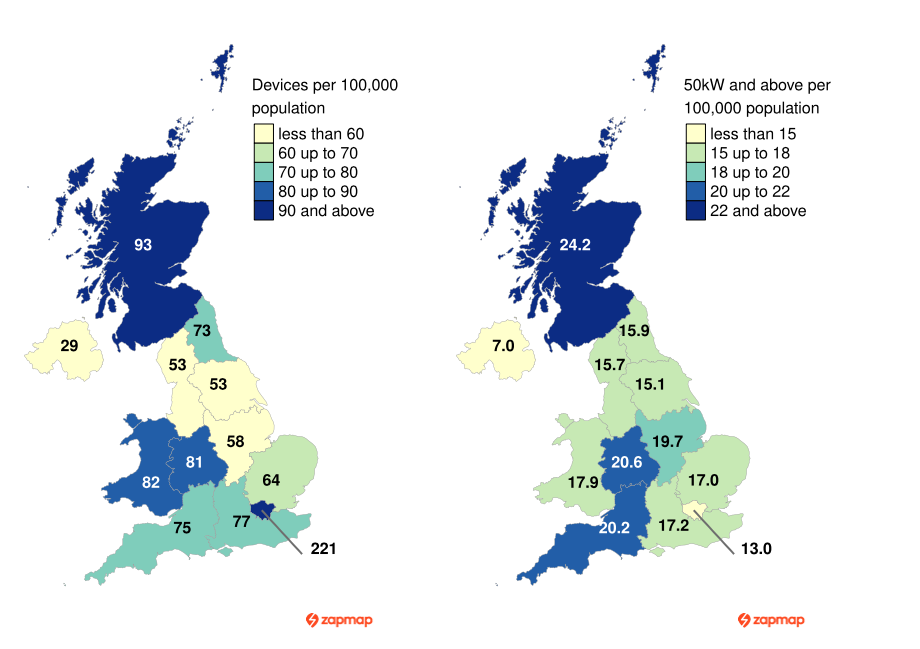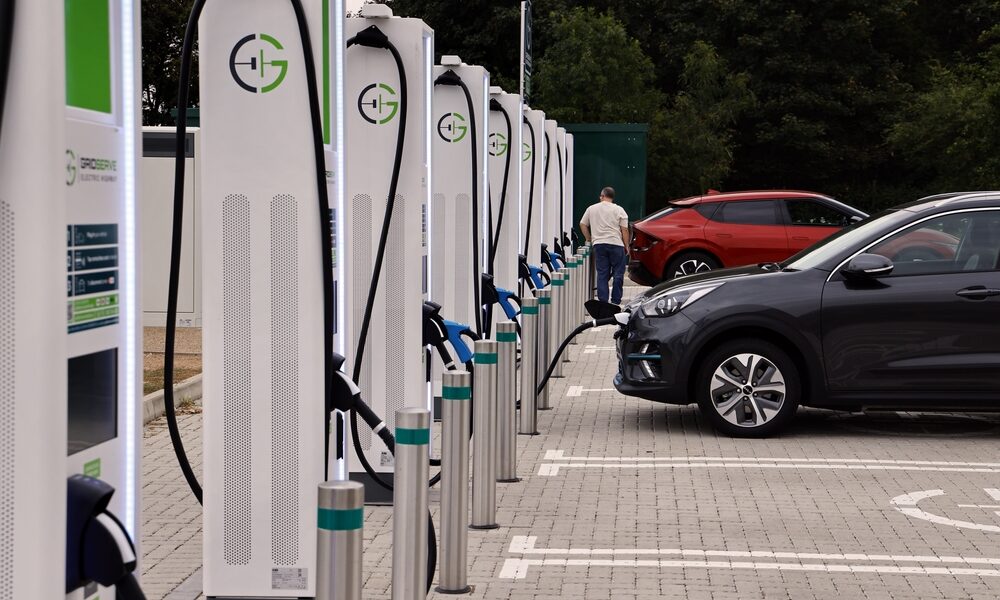Public charging network grows almost 50% in a year
The UK’s public charging network has grown by 49% in the last year, according to the latest data from the Department for Transport (DfT).
At the start of April 2024 there were 59,670 publically accessible devices across the country – almost 20,000 more than at the end of March 2023.
And the number of chargers has already risen 11% in the first three months of this year, with almost 6,000 new devices installed since 1 January.
The new data was provided by Zapmap and shows that almost half of the UK’s chargers (47%) are classed as ‘destination’ chargers – somewhere that a driver is likely to end their journey or stop for a prolonged period such as shopping centres and hotels. Just over a third (47%) are on-street devices and just 7% are classed as ‘en route’ – in service stations, charging hubs and ferry terminals.
The figures also show that the majority of public devices are still lower-powered chargers. Devices rated from 3kW to 8kW account for 59% of all public chargers, while another 21% are 8-49kW. Those able to charge at between 50kW and 150kW make up just 12% of the mix and those above 150kW just 8% – a total of 11,590 devices between them.
However, recent figures show that ultra-fast chargers are being rolled out faster than other types devices as more large ‘en route’ hubs are developed.
John Lewis, CEO of on-street charging provider, char.gy, welcomed the latest statistics. He said: “We’re delighted by the progress outlined in the recent DfT report, which reveals a robust 49% year-on-year growth, resulting in nearly 60,000 charge points now installed.
“Particularly encouraging is the expansion of the on-street network, which has now reached 22,000 charge points, accounting for over a third of all charging solutions. Given that 99% of UK journeys average less than 100 miles, the availability of charging solutions near people’s homes is crucial.”
Geographical split continues

The figures show that London continues to have far more chargers per head of population than anywhere else in the country. There are 221 chargers per 100,000 of population in the capital, compared to a UK-wide average of 89. Scotland has the second-best provision, with 93 devices per 100,000, while Northern Ireland lags behind any other part of the UK, with just 29 per 100,000.
Scotland leads the way on rapid charging provision, with 24.2 devices per 100,000 capable of delivering 50kW or more. London, in contrast, has just 13 per 100,000, due to its higher provision of slow on-street devices, and only Northern Ireland has poorer provision of high-speed chargers, with just 7 per 100,000. Across the UK as a whole there are 17.3 50kW+ chargers per 100,000 people.
The data also shows disparity in the rate of growth. Northern Ireland’s roll-out is accelerating faster than most parts of the country – up 17% in 2024 so far, although this is from a particularly low starting point. The North-East has seen even greater growth – up 21.7% – while growth in London, Scotland, the North-West and Yorkshire & the Humber lagged behind the average increase.
The DfT report says that part of the reason for the geographical split is the attitude of local councils. It noted: “Across all speeds in total, there is an uneven geographical distribution of charging devices within the UK. Some UK local authorities have bid for UK government funding for charging devices, and others have not.
“Most of the provision of this infrastructure has been market-led, with individual charging networks and other businesses (such as hotels) choosing where to install devices.”
Robin Heap, CEO of charging firm Zest added: “It’s great to see installations increase faster outside London and the South East where they have traditionally been concentrated.
EV charging is a different experience to what petrol and diesel drivers are used to. Ultimately it can be much more convenient because it fits around people’s everyday routines – you just charge where you usually park. So right now we need abundant charging in a lot more of the places where people regularly park.”






